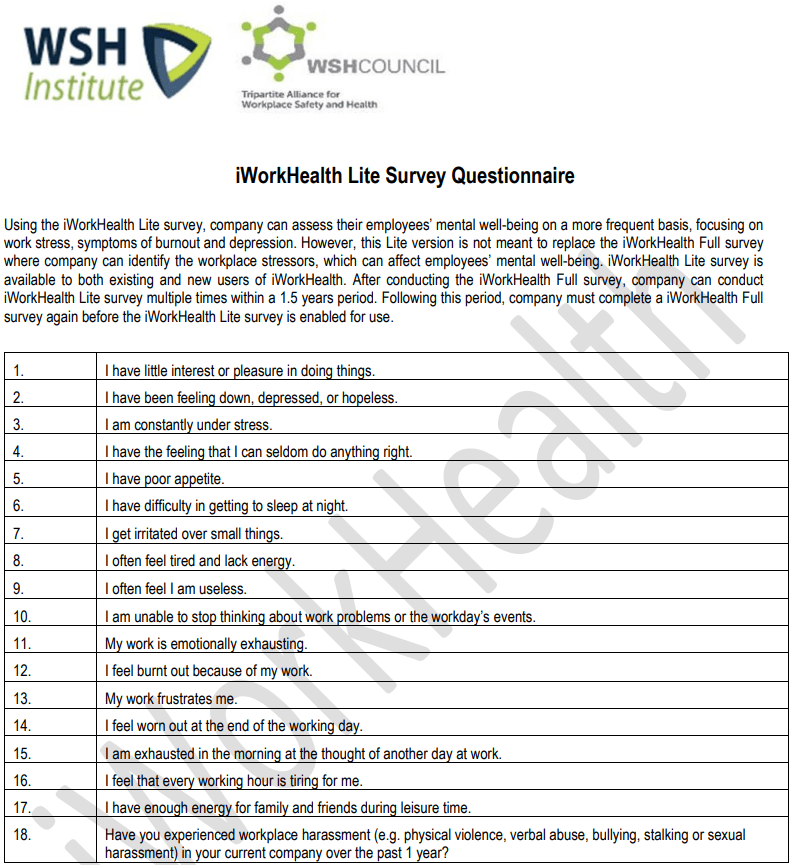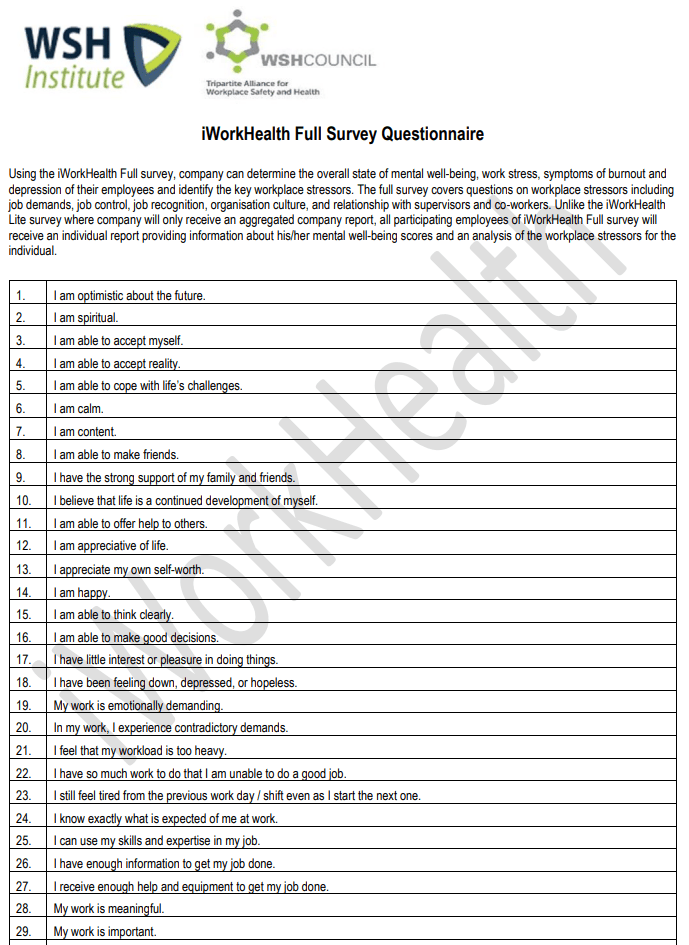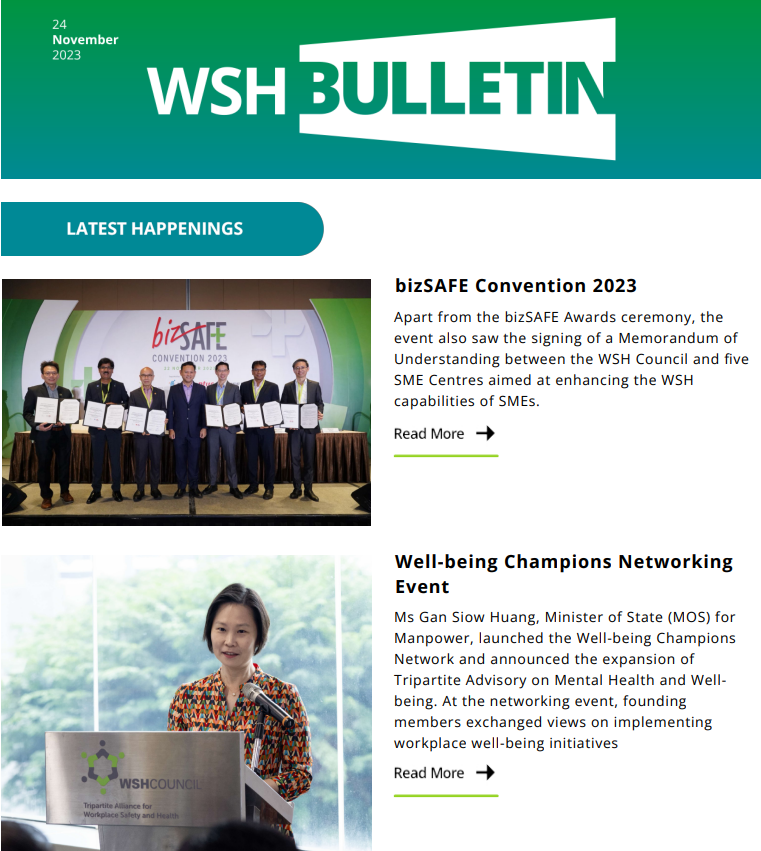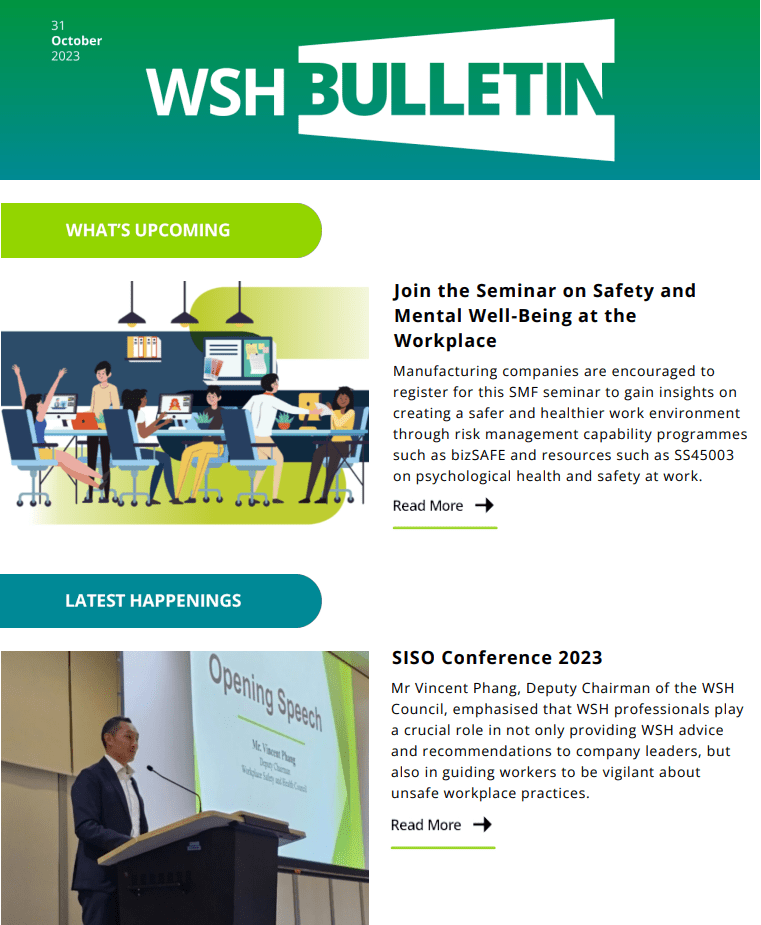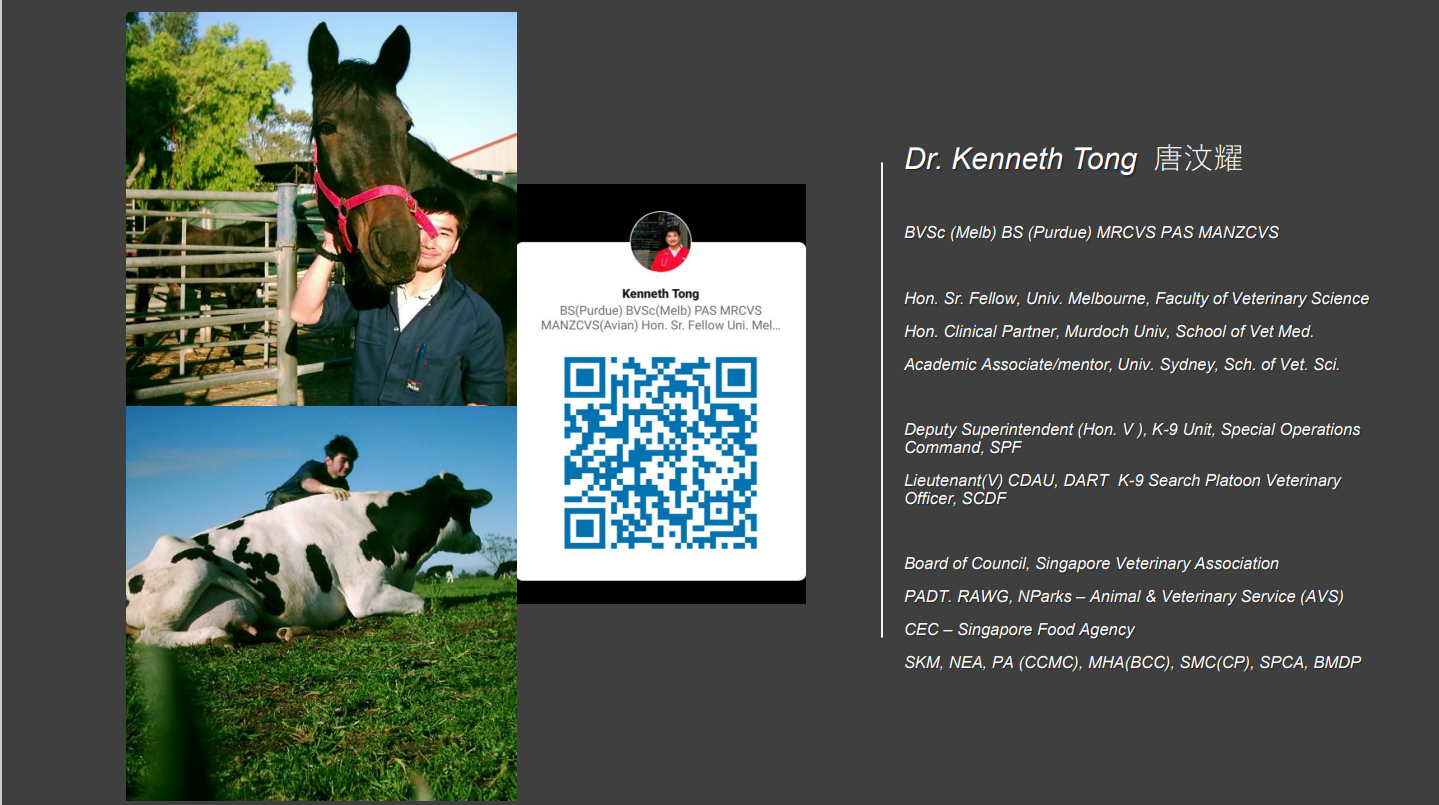iWorkHealth
Part of:
7. About iWorkHealth and Workplace Stress
iWorkHealth was developed based on a review and adaptation of various workplace psychosocial health tools from various countries, including:
• Health Promotion Board’s Mental Well-being Scale
• The Australia Workplace Barometer: Report on psychosocial safety climate and worker health in Australia
• Copenhagen Psychosocial Questionnaire
• Copenhagen Burnout Inventory
• Patient Health Questionnaire
A combination of organisational and individual approaches would be required to manage workplace stress and develop resilience amongst employees. Examples of organisational-level strategies include job procedure modification, review of workload, improved supervision, better clarity of job functions and provision of Employee Assistance Programmes (EAP). Individual-level strategies include taking time off to recharge, confiding problems with supervisor, colleagues and friends as well as strengthening coping skills through effective stress management.
However, managing workplace stress that focuses on changing individual behaviour without changing the sources of stress may have limited effectiveness. The challenge then is to identify effective interventions to address the sources of stress and to communicate the programmes effectively to all levels within the organisation.
According to the International Labour Organisation (ILO), work stress occurs when the demands of the job do not match or exceed the capabilities, resources, or needs of the worker. Stress may also occur when the knowledge or abilities of an individual worker or group to cope are not matched with the expectations of the culture of an enterprise.
Psychosocial hazards can relate to the content and context of work. Content of work refers to working conditions and work organisation, such as task design, workload, pace of work, work schedule, environment and equipment. On the other hand, context of work refers to the organisation of work and labour relations, such as organisational culture and function, role in organisation, career development, interpersonal relationships at work, and home-work interface.
Stress reactions are influenced by individual characteristics such as personality, feelings and thoughts, and the ability to cope with stress, which in turn affect the experience of stress and responses to interventions.
Research Article
iWorkHealth: An instrument to identify workplace psychosocial risk factors for a multi-ethnic Asian working population
International practices and guides on management of workplace stress
• International Labour Organisation (ILO)
• National Institute for Occupational Safety and Health (NIOSH), USA – Stress at Work
• Health and Safety Executive (HSE) UK – Stress and Mental Health at Work
• WorkSafe Victoria – Work-related Stress
• WorkSafe New Zealand – Work-related Stress
• NAPO Films on Psychosocial Risks
• Health Promotion Board’s Mental Well-being Scale
• The Australia Workplace Barometer: Report on psychosocial safety climate and worker health in Australia
• Copenhagen Psychosocial Questionnaire
• Copenhagen Burnout Inventory
• Patient Health Questionnaire
Approaches to Managing Workplace Stress
It is important to understand that there is no “one-size-fits-all” approach to create a psychologically healthy workplace and success depends on involvement of all stakeholders to address the challenges unique to each organisation.A combination of organisational and individual approaches would be required to manage workplace stress and develop resilience amongst employees. Examples of organisational-level strategies include job procedure modification, review of workload, improved supervision, better clarity of job functions and provision of Employee Assistance Programmes (EAP). Individual-level strategies include taking time off to recharge, confiding problems with supervisor, colleagues and friends as well as strengthening coping skills through effective stress management.
However, managing workplace stress that focuses on changing individual behaviour without changing the sources of stress may have limited effectiveness. The challenge then is to identify effective interventions to address the sources of stress and to communicate the programmes effectively to all levels within the organisation.
Workplace Stress
Stress is a result of imbalance between the perceived demands and perceived resources, and abilities of individuals to cope with those demands. Within limits, stress can be positive, motivating individuals to overcome challenges. However, excessive stress may become harmful, affecting the individual’s quality of life, health, mood, performance, and relationships.According to the International Labour Organisation (ILO), work stress occurs when the demands of the job do not match or exceed the capabilities, resources, or needs of the worker. Stress may also occur when the knowledge or abilities of an individual worker or group to cope are not matched with the expectations of the culture of an enterprise.
Causes of Workplace Stress
The causes of stress at the workplace come from multiple factors and are called psychosocial hazards or workplace stressors. The ILO defined psychosocial hazards as the interactions between and among work environment, job content, organisational conditions and workers' capacities, needs, culture, personal extra-job considerations that may through perceptions and experience, influence health, work performance and job satisfaction.Psychosocial hazards can relate to the content and context of work. Content of work refers to working conditions and work organisation, such as task design, workload, pace of work, work schedule, environment and equipment. On the other hand, context of work refers to the organisation of work and labour relations, such as organisational culture and function, role in organisation, career development, interpersonal relationships at work, and home-work interface.
Stress reactions are influenced by individual characteristics such as personality, feelings and thoughts, and the ability to cope with stress, which in turn affect the experience of stress and responses to interventions.
Symptoms and Effects of Stress
The symptoms and effects of stress vary from person to person, affecting well-being and performance to different extents. The effects of workplace stress are challenging to address as they do not fit into the traditional categories of workplace hazards (physical, mechanical, electrical, chemical, biological) that can be seen or measured objectively. The same work situation may be stressful for one person but not for another. Furthermore, it is difficult to objectively attribute how much an individual’s stress is related to work or non-work factors. It is therefore important to be aware of the early symptoms before stress takes a toll on one’s health.Importance of Early Intervention
Identifying workplace stressors and implementing interventions during the early phases lessen the harmful effects and provide support to employees to cope with stressful situations. Below are some intervention strategies that employers can consider:| Intervention | Primary Intervention | Secondary Intervention | Tertiary Intervention |
| Objectives | Prevent harm by managing workplace psychosocial risks | Manage stress by increasing worker's coping skills | Detect and support employees suffering from stress and burnout |
| Examples | Develop skills to build resilience, job design and workload management | Stress management training | Employee-assisted programmes e.g. short term counselling |
Useful links and references
iWorkHealth BrochureResearch Article
iWorkHealth: An instrument to identify workplace psychosocial risk factors for a multi-ethnic Asian working population
International practices and guides on management of workplace stress
• International Labour Organisation (ILO)
• National Institute for Occupational Safety and Health (NIOSH), USA – Stress at Work
• Health and Safety Executive (HSE) UK – Stress and Mental Health at Work
• WorkSafe Victoria – Work-related Stress
• WorkSafe New Zealand – Work-related Stress
• NAPO Films on Psychosocial Risks


